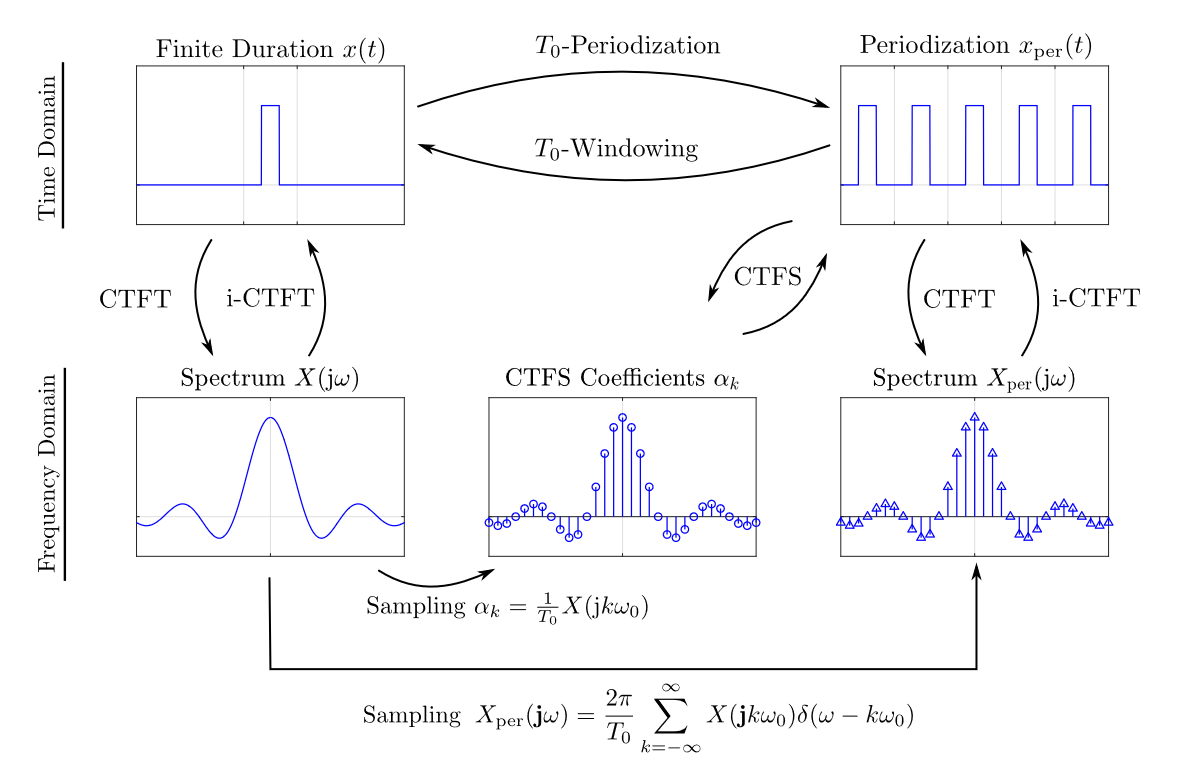The continuous-time Fourier transform (CTFT) is an integral transform that allows us to perform Fourier analysis (which was previously restricted to periodic signals) on aperiodic signals.
The CTFT of a CT signal is the complex-valued signal defined by:
where is the Fourier transform or spectrum of . The inverse CTFT of a CT spectrum is the CT signal defined by:
If is a periodic signal (with fundamental period ), the CTFT spectrum is given by:
Computations
A windowing function will produce a sinc function in the opposite domain:
There isn’t an immediate formulaic way (I think) to find this (depends on the circumstance) but windowing functions are fairly easy to find the CTFT of.
Properties
If is very concentrated in the time domain, it will be very spread out in the frequency domain. Additionally, a multiplication of functions in the time domain is a convolution in the frequency domain.
In general, any real-valued signal will have a spectrum with conjugate symmetry, i.e., . Then we have two results:
- The magnitude is an even function of .
- The phase is an odd function of .
The relationship with the CTFS is as follows:1

Existence
If has finite action, i.e., , then the CTFT is well-defined and satisfies . The proof for the well-defined statement is given by:
For the second statement, the proof is given by the Riemann-Lebesgue lemma.
Additionally, if has finite energy, i.e., :
- Then exists and has finite energy, i.e., .
- The signal and its spectrum satisfy Parseval’s theorem.
In either case, the signal may not have finite action nor finite energy, i.e., but still have a CTFT. For example, the complex exponential signal has CTFT .
Table of properties

Derivation
If we have an aperiodic CT signal , we take a few steps. We first window a signal between a period to obtain a finite-duration signal, which we then periodise.
When we represent it with the CTFS:
If we define a complex-valued function:
Then the CTFS coefficients are samples of :
Since . Since this sum functions as a Riemann sum with representative width , we can generalise as , such that:
Footnotes
-
From Prof Simpson-Porco’s lecture notes. ↩